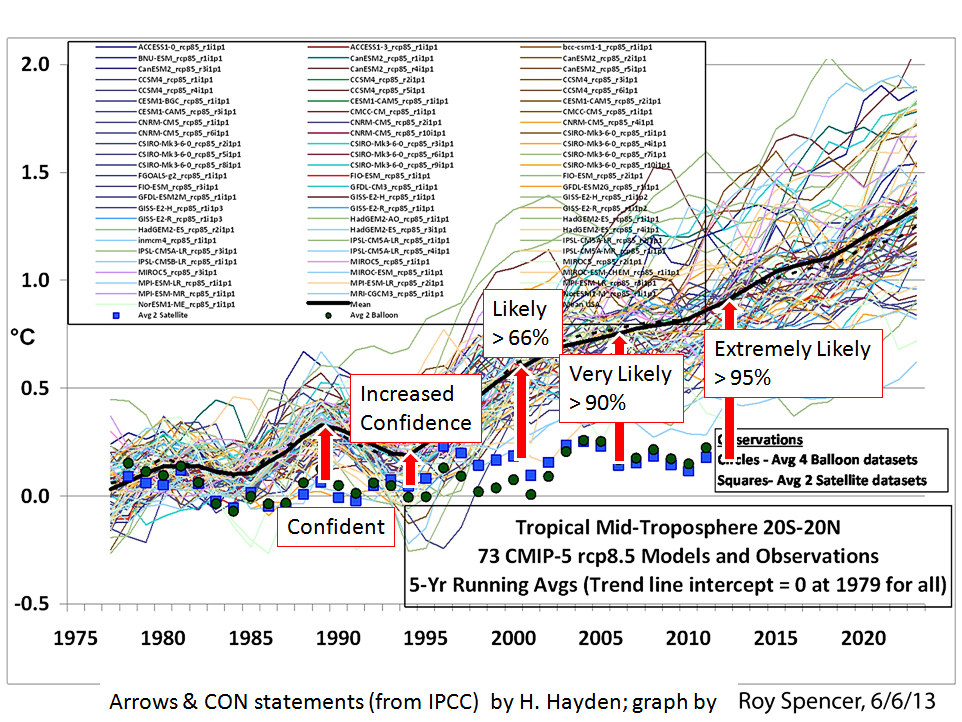A Better Answer to Climate Change Is Hidden in the Clouds
December 13, 2013 | Scientific American
 Climate scientists are studying a bewildering array of changes taking place in the air, on land and in the sea. But where should they concentrate their efforts? First and foremost, it seems, are clouds. Better understanding of how clouds affect global warming, and how airborne particles affect cloud formation, is one of three gaps in knowledge that could most improve predictions of how extensively and quickly Earth’s climate will change.
Climate scientists are studying a bewildering array of changes taking place in the air, on land and in the sea. But where should they concentrate their efforts? First and foremost, it seems, are clouds. Better understanding of how clouds affect global warming, and how airborne particles affect cloud formation, is one of three gaps in knowledge that could most improve predictions of how extensively and quickly Earth’s climate will change.So say three experts who played a major role in writing the latest climate assessment report published in late September by the Intergovernmental Panel on Climate Change (IPCC). They spoke as a group at the American Geophysical Union’s annual fall meeting being held this week in San Francisco. Considering that climate deniers are constantly accusing IPCC scientists of not having airtight data, it took some guts for the experts to identify gaps in knowledge. But they said the gaps do not undermine prevailing climate predictions, which have become increasingly thorough for two decades.
Filling the gaps, they said, would further enhance the forecasts. In that sense, the experts are calling for scientists to do what scientists always strive to do: learn, then figure out what more needs to be discovered, and go find it.
The climate effect of clouds, especially low clouds, is still a bit of a mystery, said Olivier Boucher, from the Pierre Simon Laplace Institute in Paris, who was the lead author of the IPCC report chapter on clouds and aerosols (airborne particles). “Low-level clouds are the wild card” in many atmospheric models, he noted. And they are changing. For example, low clouds seem to be migrating toward the north and south poles, where they have less affect on blocking incoming heat from the sun and in absorbing heat radiated from the Earth. Scientists also do not have a good handle on whether low clouds are getting thicker, if they are holding more water vapor, or if the dwindling of Arctic sea ice is leading to more or less cloud formation. [Notes: 1) total column water vapor has declined over the past 50+ years, 2) decreased Arctic sea ice allows more evaporation and clouds to form, a negative feedback]
A related gap in knowledge is how aerosols affect clouds. For example, black carbon—the particles emitted by burning fossil fuels—“is more important than we thought” in determining how much heat the atmosphere can trap [because black carbon causes global cooling], Boucher said. “It’s really critical to understand the feedbacks” that may occur between aerosols and clouds, and feedbacks between that interaction and changes in Arctic sea ice. Together, the set of feedbacks could substantially “amplify or dampen climate change,” Boucher said.
Those interactions feed into a second gap in understanding: how carbon is emitted, transported and stored among soils, plants, air and ocean—the so-called carbon cycle. Newly emitted carbon dioxide persists in the atmosphere for hundreds of years [false], so how readily it is absorbed and held in soil and seawater affects the extent of the greenhouse effect, as well as the now-rising acidity of ocean water, noted Philippe Ciais, also at the French institute and lead author of the IPCC chapter on biogeochemical cycles.
What’s happening in the ocean itself is a third gap that must be filled. Oceans absorb a large portion of the carbon dioxide emitted into the atmosphere. Although the top layer of the ocean has been warming somewhat in step with the air above it, that rate of warming may be slowing, even though CO2 emissions continue to increase worldwide. “Where is that [missing] heat going?” asked Dennis Hartmann from the University of Washington, author of the IPCC chapter on measurements of the Earth. Some scientists suspect that ocean currents are transporting that heat to deeper layers, but they just don’t know. A new, global system of buoys that can dive deep down into the water and rise over a series of days, again and again, should help generate an answer, Hartmann said.
A related question is whether the ocean is slowing the current rise of atmospheric temperatures, sometimes called the hiatus or the pause. More scientists are saying the pause may be driven by changes in the El Niño and La Niña cycle of ocean-atmosphere interactions in the central Pacific Ocean. If so, Hartmann asked, “How long will the hiatus persist?”
Other open questions, Hartmann said, are why Arctic sea ice is rapidly disappearing while Antarctic sea ice is increasing, where heavy rainfall is spreading, and how greater humidity in the atmosphere is affecting that rainfall as well as severe storms.
If scientists can fill these particular gaps in knowledge, Hartmann said, they should be able to predict not just long-term trends but changes on a decade-to-decade scale. That kind of fine-grained forecast would greatly help cities, municipalities, businesses, farmers and many others better plan ways to adapt to climate change.
The insight would help local weather forecasters, too. For example, atmospheric scientists can only reliably model cloud cover a few hours into the future, Boucher noted. “We would like to be able to do that for a month,” he said.
Related:
NCAR scientist admits IPCC may be wrong on clouds, may have a net cooling effect instead of warming









0 comments:
Post a Comment